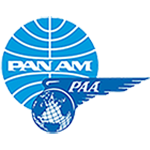PAA - 1932
JANUARY
By Eric Hobson

"The Term 'Clipper' in The Early Years of 20th-century Aviation"
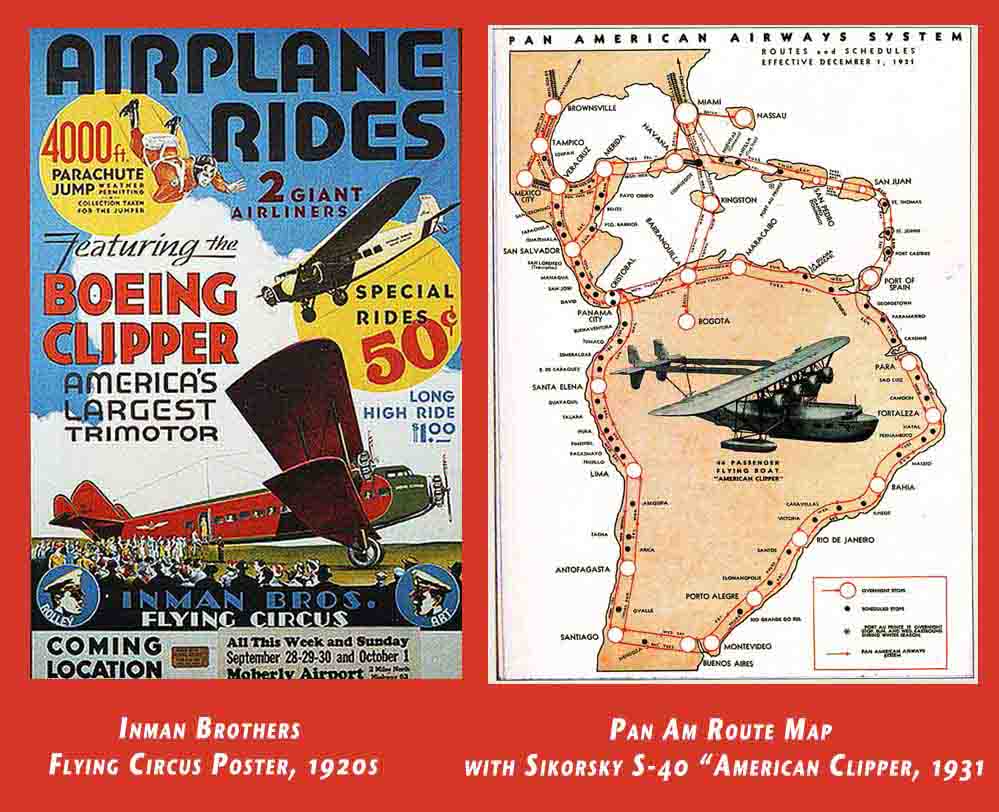
“The Inman Brothers Flying Circus was one famous barnstorming troupe. They operated a 20-passenger Boeing 80A aircraft, which was billed on their advertising billboards as the “Boeing Clipper — America’s Largest Trimotor.” …
The Inman Brothers, are, in a way, part of the Pan American story since they employed the term Clipper before Juan Trippe and Pan American Airways. However in 1931, the Clipper trademark was registered by Juan Trippe and Pan American Airways for their new fleet of S-40s.
The Inman Brothers had to launch a lawsuit to be allowed tIo continue to use the “Boeing Clipper — America’s Largest Trimotor” in their flying circus advertising.” ["The Pan Am Clipper — The History of the Pan American Clipper Flying Boats (1931-1946)” by Roy Allen]
Photo: 1920s Inman Brothers Flying Circus Poster Wikimedia Commons/San Diego Air and Space Museum Archive/ Don Thomas Collection on Flickr's The Commons.

“A Hard Day/Night Flight”
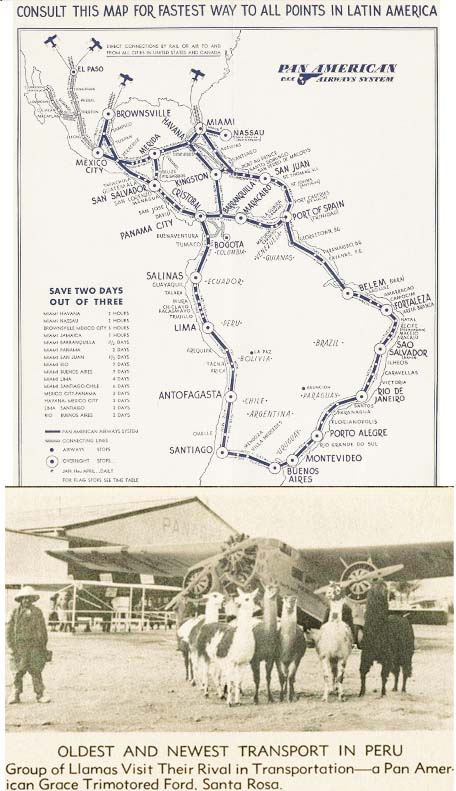
Pilot W. Smith and crew arrived in Lima, Peru late Monday, January 16 exhausted at the end of 16 hours and 10 minutes of flying that started 1,906 miles southeast in Mendoza Argentina. This flight was supposed to have left Mendoza Saturday afternoon, but storms, wind, fog and ice had closed the area’s only trans Andean route for 40 hours. Once Smith took off Monday morning, he pushed the PANAGRA Ford AT-5-C hard.
The scheduled northbound route had 8 stops (Mendoza – 112 miles – Santiago – 250 miles – Ovalle – 593 miles – Antofagasta – 446 miles – Arica – 40 miles – Tacna – 140 miles – Araquipa – 475 miles – Lima), including an overnight in Antofagasta, Chile, halfway between Santiago and Lima. This Monday each stop was just long enough to swap out mailbags and passengers while fuel was loaded and the cockpit windows cleaned, and Antofagasta was 1,000 miles behind at bedtime.
The report of Smith’s flight in Pan American Air Ways (4.1, p. 26) indicate neither his departure nor arrival times. Because the first leg (Mendoza to Santiago) threaded the 15,000 foot Uspallata Pass, Pan Am/PANAGRA policy limited these flights to daylight hours. First light in mid-January comes at 6:20 a.m. on January 16 in Mendoza, Argentina; full light follows in 28 minutes. Assuming Smith left Mendoza at 6:30 a.m., his Lima arrival was no earlier than 10:40 p.m., the last four hours and 10 minutes flown in the dark.
Smith’s efforts returned the route to on-time service and Tuesday’s northbound flight from Lima to Salinas, Ecuador left on time. Luckily for Smith and his copilot/mechanic/radio operator, the next southbound flight wasn’t until Thursday, January 19, so they could sleep in.
-Time tables, tariffs: Havana, Nassau, Mexico, Panama, West Indies, Central and South America, June 15, 1933, University of Miami Special Collections, Pan American World Airways, Inc. records. https://digitalcollections.library.miami.edu/.../rec/39
-"Pan American Air Ways," Vol. 4, No. 1, March 1933. p. 26 https://digitalcollections.library.miami.edu/.../40869/rec/1

"Highest Operating Efficiency"
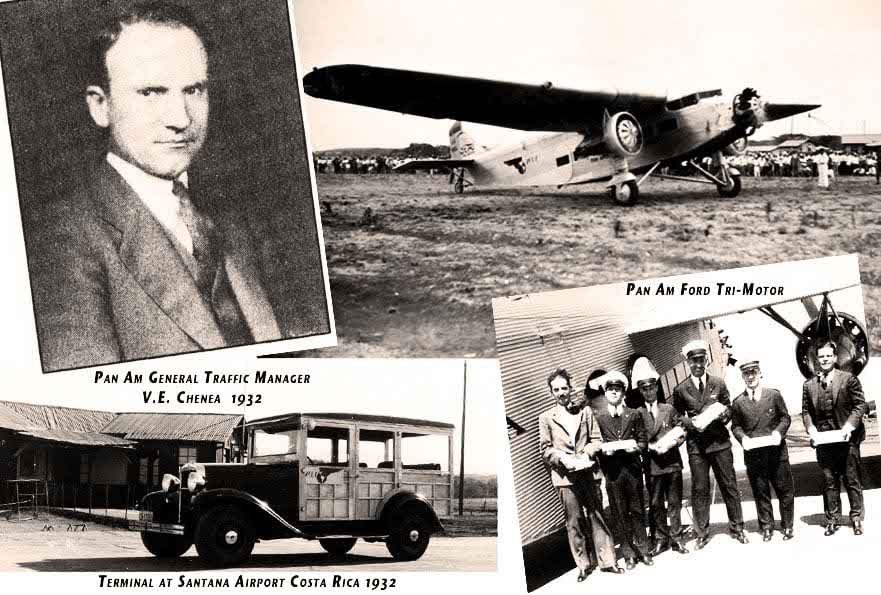
January 20, 1932 Pan Am General Traffic Manager, V.E. Chenea announced that the United States Post Office Department recognized PAA as having “the highest operating efficiency rating of any airline in the world – 99.71%.” He added, “No other major airline in the world approaches this universal standard for air transport.”
Photos: Ford Trimotors & Santana Airport, San Jose CR, 1932 (PAHF Collection).

"Bond on the Bund: Shanghai, China"
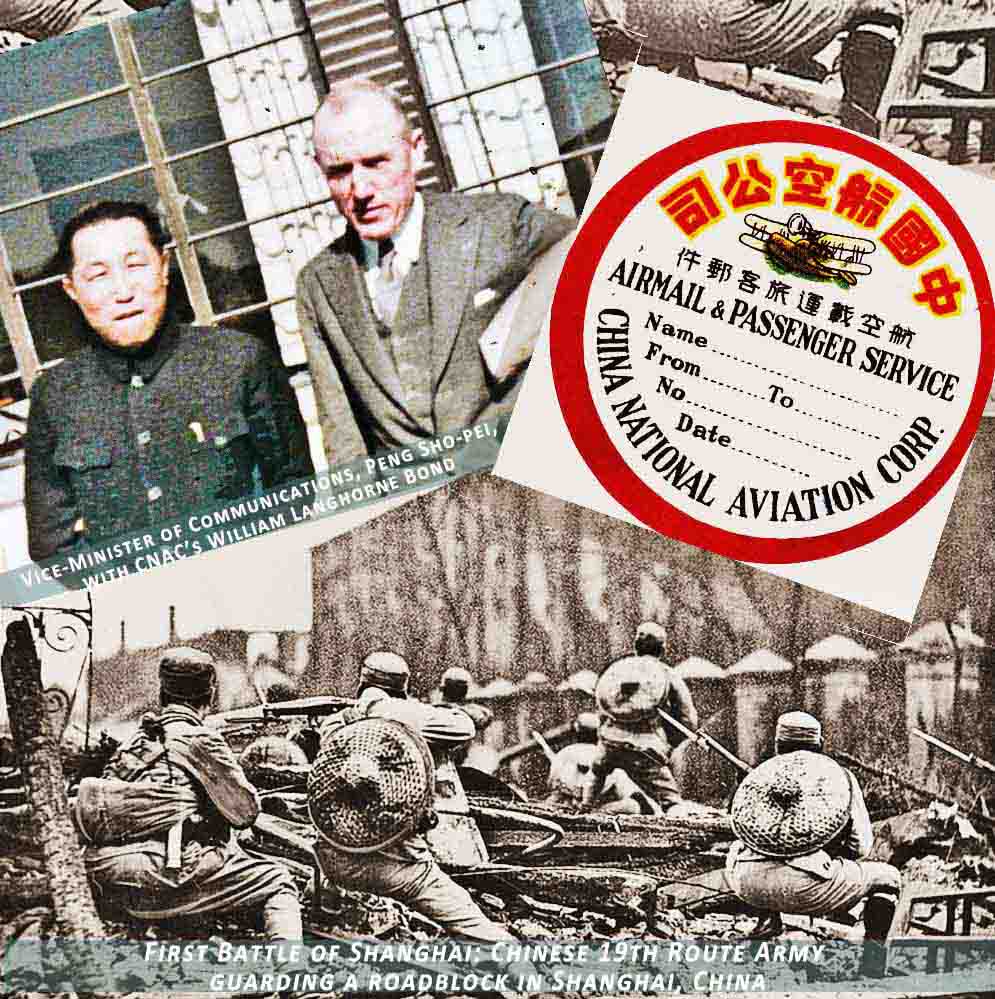
William Langhorne Bond, Manager, China National Aviation Corporation (CNAC), awoke seconds after midnight as Japanese airplanes began bombing Shanghai to open a coordinated attack on China’s most important city. The dawn’s view was grizzly: street warfare enveloped the city with more than 150,000 combatants involved by the week’s end.
Regardless, Bond had CNAC flying its regular schedule into China’s heartland within the week, and, by doing so, confirmed that air-services had rewritten warfare models: aircraft can leapfrog ground clashes and break military sieges.
The “Shanghai Incident” lasted five months (25,000+ persons died: 10,000 Chinese and Japanese soldiers; 15-20,000 Chinese civilians), served as an opening salvo to World War II, and as the first indiscriminate aerial bombing of civilians.
Despite the turbulent and often dangerous operational conditions, Pan American Airways bought 45% of CNAC fourteen months later (April 1, 1933) and Bond ran the airline until PAA sold out in 1949 following the fall of the Chinese Nationalist government.
For most of that that decade and a half Bond and CNAC did not fly in peaceful airspace. That dicey experience, however, provided Pan Am a laboratory from which emerged invaluable lessons that PAA put to use throughout World War II and beyond.
For more on the “Shanghai Incident”, William Langhorne Bond, C.N.A.C and PAA:
• Gregory Crouch, “China’s Wings” (Bantam, 2012): for a review of the book and how to purchase: https://www.panam.org/new.../133-china-s-wings-book-review-2
• Eric Hobson, “Mission to China” (a 4-part PAHF series): https://www.panam.org/mission-to-china-part-1

